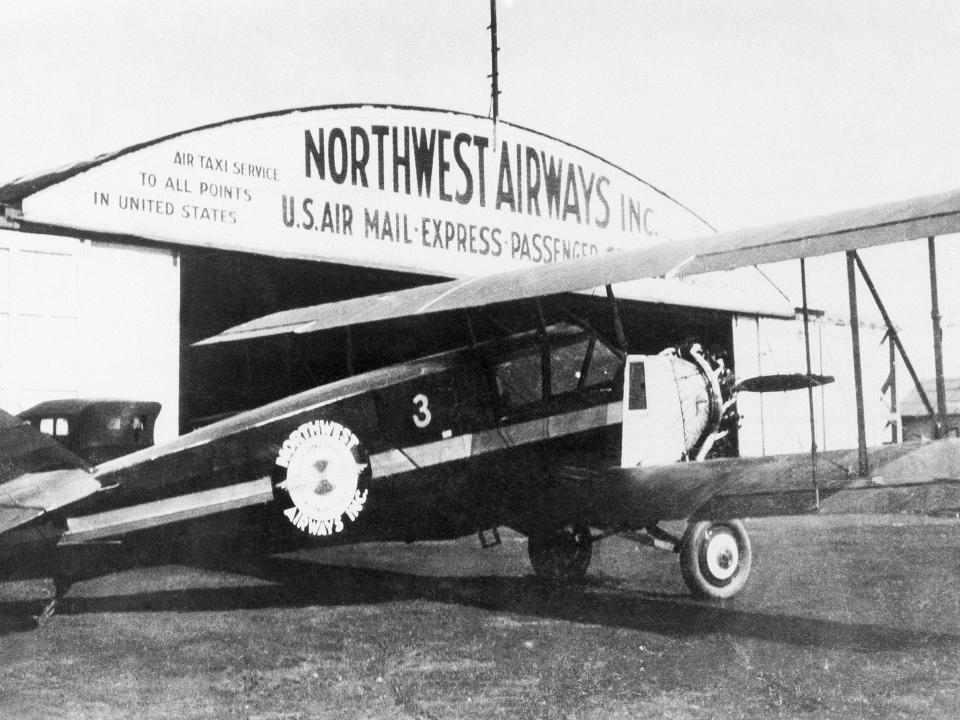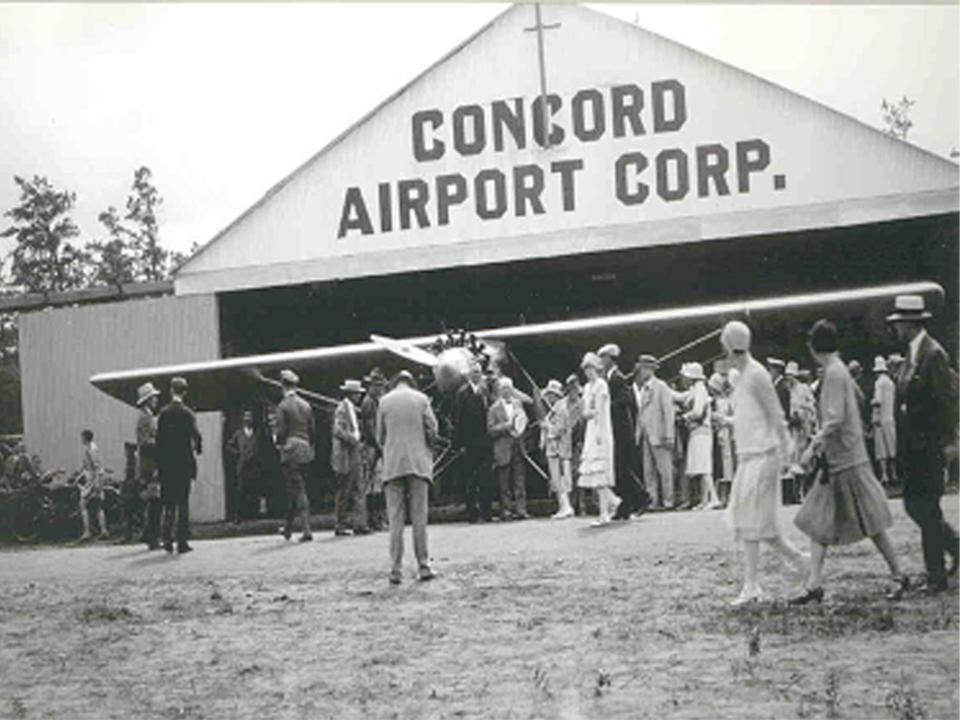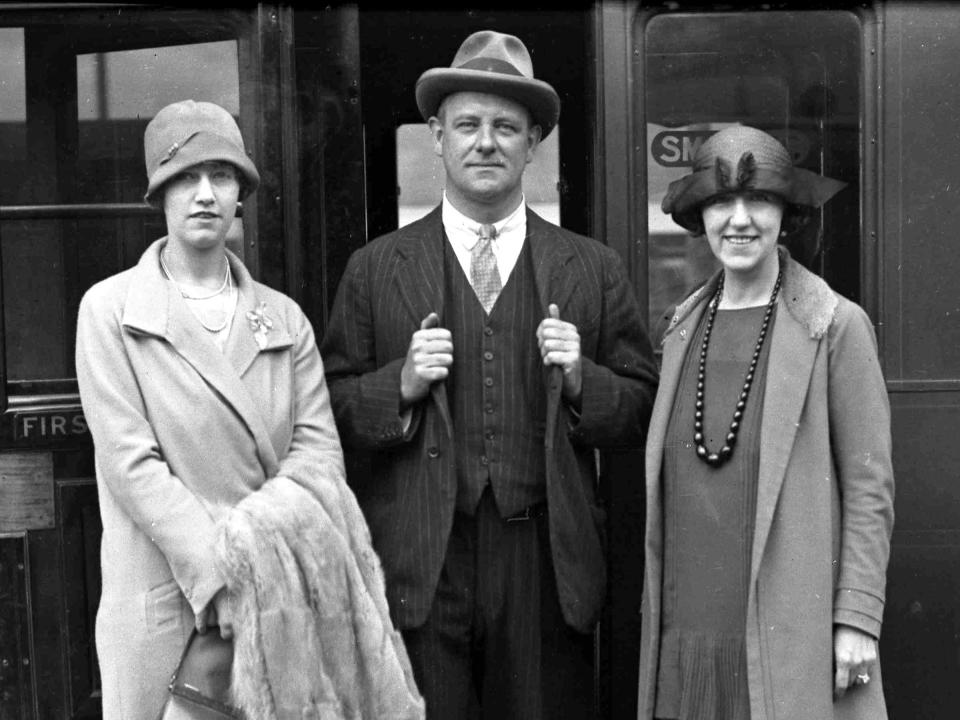25 photos that show how different traveling was 100 years ago

In the 1920s, plane windows were just open holes, and airports were more like garages.
During the Prohibition era, cargo trains were searched for alcohol.
Traveling by cruise ship was a black-tie affair.
Life 100 years ago was different in many ways, especially when it came to traveling.
Driving cross-country, boarding a train, or hopping on a cruise ship looked much different in the 1920s than it does today.
Here's a look back at what traveling was like 100 years ago.
Commercial flights have been taking to the skies for more than a century. In the early 1920s, aviator Alfred W. Lawson built a series of passenger aircrafts with mixed success.

Lawson's C-2 biplane airliner completed flights from Milwaukee to New York City and Washington, DC, in 1919. Its introduction led to commercial air travel becoming more common, Airways magazine reported.
But when he tried to build a larger passenger aircraft designed to carry 34 people in 1921, it crashed in a field, bringing an end to his company, according to the National Air and Space Museum.
Passengers boarded planes through small doors at ground level, not enormous terminals and insulated walkways.

Lufthansa began its official flight service in 1926, according to the airline's website.
Plane windows were just open holes.

You can't stick your arm out of a plane window anymore.
It wasn't until the 1930s that the first plane with a pressurized cabin was built, Smithsonian magazine reported.
Airports weren't the glorified shopping malls they are today.

These Stinson "Detroiter" planes were the first closed-cabin planes used by a commercial airline, DBusiness magazine reported.
In the 1920s, airports were more like garages.

Charles Lindbergh flew the first nonstop solo flight across the Atlantic Ocean in his single-engine plane, Spirit of St. Louis (pictured), according to Encyclopedia Britannica.
Airplane passengers used to fly in bow ties and fashionable hats.

People don't really dress up to go on planes anymore, but there can be surprising benefits if you do.
Railroads were a popular mode of transportation in the 1920s.

In addition to carrying people, trains transported mail and manufactured goods.
As with flying, passengers traveled in style.

British author P.G. Wodehouse was photographed leaving for a family vacation from Waterloo Station in London in 1929 wearing a three-piece pinstripe suit.
In transit, movies were projected onto the carriage wall in cozy theaters lined with curtains and rows of chairs.

Watching movies on your phone wouldn't become an option until much later.
Blizzards slowed down travel in the 1920s, too.

The Empire State Express (pictured) operated between New York City and Buffalo, New York, from 1891 to 1967, according to the Fort Wayne Railroad Historical Society.
During the Prohibition era, cargo trains were searched for alcohol.

In 1929, authorities caught crates of whiskey disguised as green tomatoes in the refrigerator car of a cargo train traveling from Holandale, Florida, to Newark, New Jersey.
By the 1920s, automobiles had been around for a few decades.

Karl Benz is widely credited as inventing the first automobile between 1885 and 1886, according to the Library of Congress.
Gas stations used to look like main street-style buildings with curbside gas pumps.

In the 1920s, they began to be replaced with drive-in pumps to decrease traffic, according to the University of Michigan.
Birthday road trips looked a little different back then.

Mayor Charles F. Sullivan of Worcester, Massachusetts, held up a sign that said, "Clear the road! This is my 20th birthday" while taking a drive in 1923.
Traffic cops' uniforms in the 1920s featured double-breasted jackets and white gloves.

There were around 82,000 police in the US in 1920, according to US Census data. By 1930, that number reached 130,000.
There was no GPS or internet to search for driving directions.

You were on your own.
There were no built-in navigation systems or touchscreen on the dashboard, either.

Cars were simply equipped with an instrument panel, steering wheel, lighting switch, and gear shift hand lever.
Bus tickets were dispensed on little paper tags.

The 1920s were known as the "golden age" of road building, according to the US Department of Transportation. Buses and trucks grew in popularity thanks to the Federal Highway Act of 1921, which funded the construction of a national highway system.
Tourists dressed up to ride sightseeing buses, which were then small electric vehicles.

These days, people turn tourist buses into tiny homes.
The New York City subway used to cost a nickel.

Before the nickel-operated turnstiles, a ticket-chopper manually cut tickets at the gate. Today, a subway ride costs $2.90.
Cruising in the 1920s was the height of luxury.

Cruise ships today have Go Kart race tracks and zip lines.
Cruise-ship passengers dressed in tailored suits and spiffy hats.

English theatrical producer Charles B. Cochran, composer Sir Noel Coward, and their entourage boarded the Berengaria in 1928 dressed to impress.
Dances were a popular social activity on cruise ships.

Guests wore gowns and tuxedos on the dance floor. On modern cruise ships, dress codes aren't enforced.
To relax, passengers wore one-piece jumpsuit-style bathing suits to swim in cruise-ship pools.

Swimsuit styles have changed over the years.
Cruise ships remain a glamorous way to travel today.

Even though the formal dinners and ball gowns of the old days have turned into buffets and flip flops, cruise ships continue to offer a host of amenities and travel routes that keep people coming back.
Read the original article on Insider

 Yahoo News
Yahoo News 
